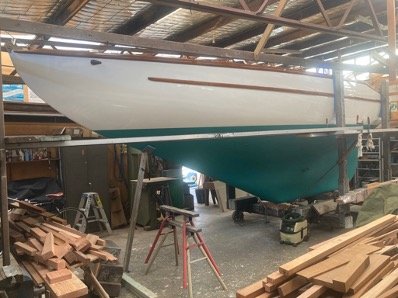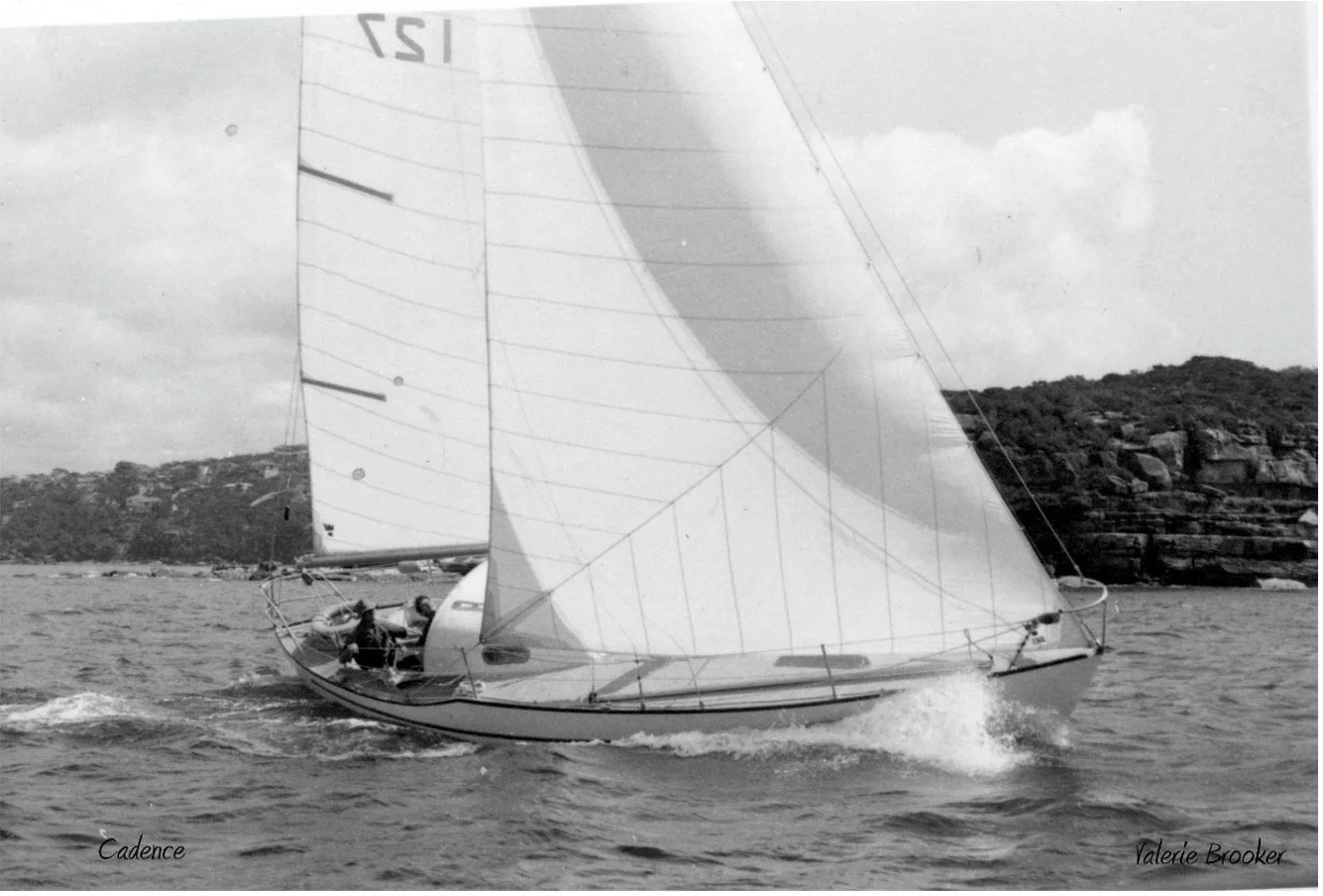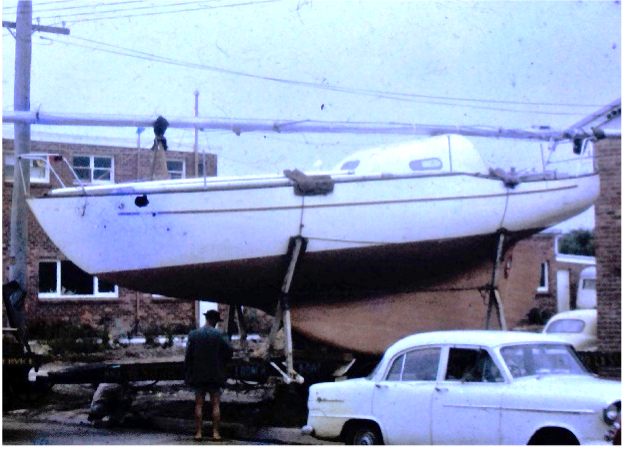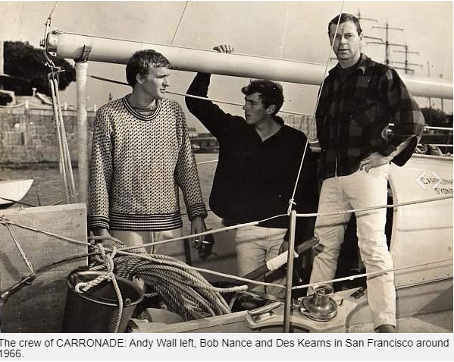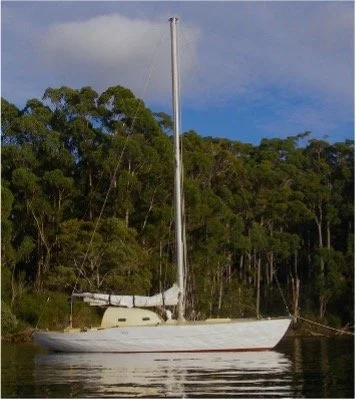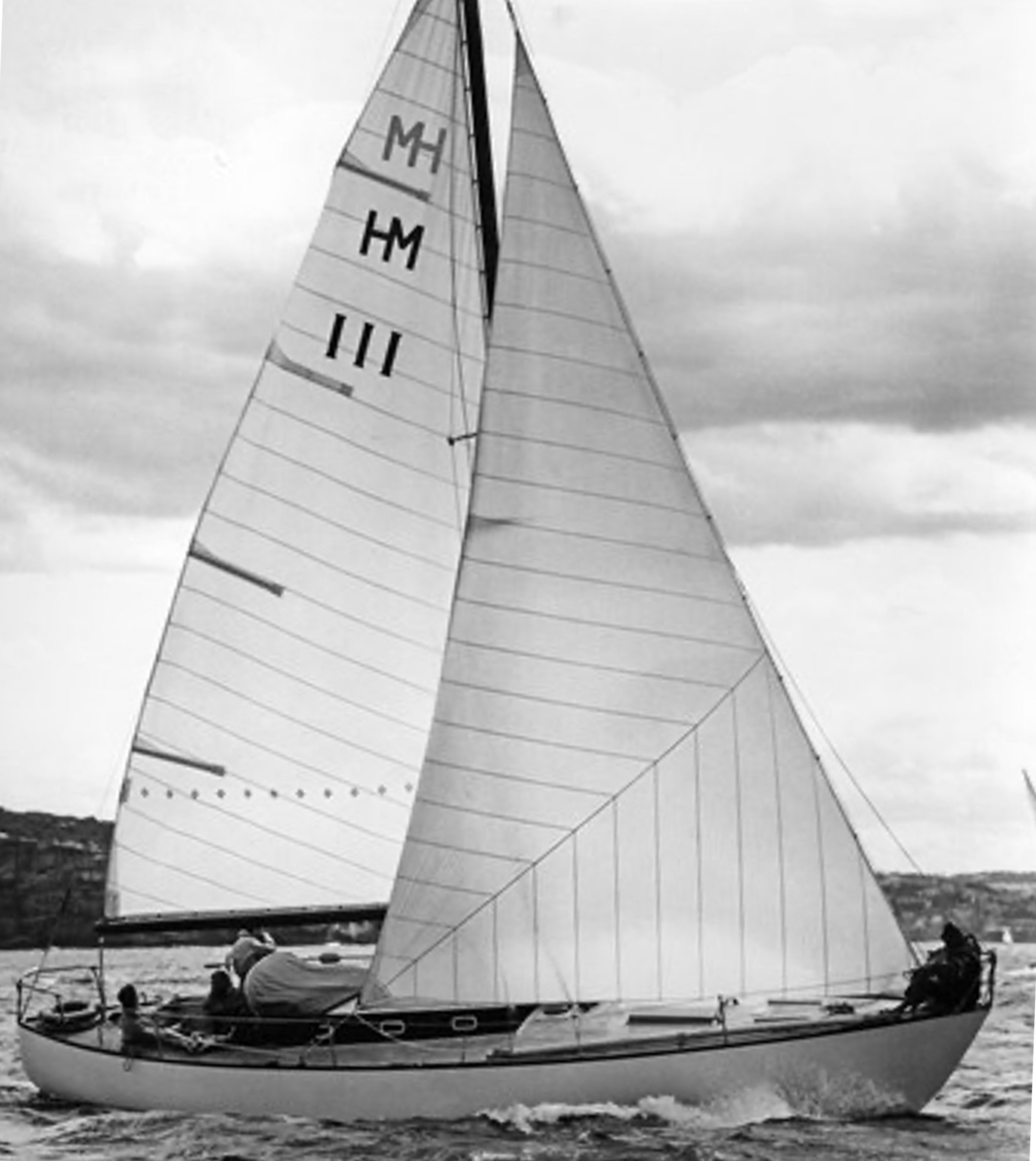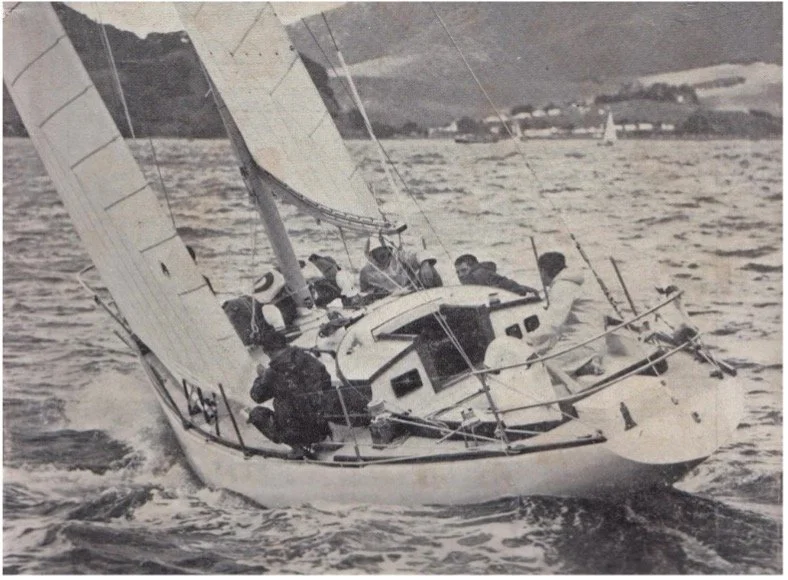Wally Ward designs and the CA’s
By Ian Ward
Wally, Eva and John Ward in Pittwater
This article describes the unique history and truly Australian story of Wally Ward designed yachts over a period of 30 years from 1937 to 1965 and beyond. The story begins with his first boat Janaway, through a series of yachts he designed for friends such as Jasnar, Camira and Caress, to his unique collaboration with Ron Swanson.
The various design methods used by Wally are described, including the Metacentric shelf principle which resulted in extremely well-balanced yachts with a sea kindly nature.
The impressive racing record of CARMEN, CADENCE & CAVALIER and later on, the larger CAMILLE and CAMELOT is told, which led to the widespread popularity of all these boats.
The wonderful adventures of CARRONADE are recounted, along with the many cruising exploits of several other CA’s as they affectionately became known.
During the 1970’s, after Wally’s death, the rating rules changed and Ron Swanson went on to design and build his own stable of boats.
The legacy of Wally Ward designs remains strong today, through both the impressive race records and active involvement of many dedicated owners of his designs in restoring & preserving their boats while enjoying their intrinsic qualities.
Origins
Walter Roy “Wally” Ward (1888-1965) grew up in Balmain in Sydney and eventually moved to Mosman with his wife Eva and their son John. Wally designed his own house and even built his own plywood caravan and lap streak sailing canoe, as well as designing his own boat JANAWAY in 1937.
JANAWAY in full flight on Broken Bay
JANAWAY
Wally Ward was a keen amateur yacht designer with a particular interest in hull balance, using the metacentric shelf principle. He designed JANAWAY for his own use. She featured a slender, pretty, canoe stern which was in part dictated by the need to produce a balanced hull shape. The tall Marconi rig with loose footed main was efficient upwind and the self-tacking jib enabled her to be easily sailed single handed in any conditions. [1]
JANAWAY was 28ft long and 22ft on the waterline, with a displacement of 4 tons and sail area of 430 sq ft. She was built by Jim Perry in his houseboat at Fisher Bay, near The Spit on Middle Harbour and launched in 1938 by removing the end wall of the house. Constructed from NZ kauri which is renowned for its durability and stability as a boat building timber, she has stood the test of time. (click to enlarge)
She was raced very successfully from 1947 to 1970 by John Ward, sailing at both the MHYC and SASC yacht clubs.
In addition to developing the lines plans of the hull, Wally also produced detailed construction drawings. For the metal fittings, he first made the foundry patterns in timber, which were then cast in gunmetal. He machined the castings himself at home on the lathe, even making his own mill to machine tapered keyways. He made most of the metalwork including keel bolts and nuts, mast & boom fittings as well as the deck fittings and tiller himself.
In 1960 John Ward modified the rig and keel, adding more sail area with an overlapping genoa, hydraulic winches, folding/locking propeller and many other innovations. He raced competitively and very successfully for many years from 1947 to 1970, with a formidable reputation as one of the smallest and scratch boats in the MHYC fleet.
JANAWAY was eventually sold by John Ward in 1970 when he embarked on designing and building his own larger yacht INTRINSIC. JANAWAY has been fortunate to have several loving ‘custodians’ over the years, including John Firth-Smith, Les Soars, John Adameitis and Julian Haskard. She has provided inspiration for both artworks and an impressive lineage of yachts, the story of which is presented in this article.
JANAWAY was extensively restored in 2019 by Julian Haskard and is still sailing regularly at North Harbour in Sydney and with Sydney Amateur Sailing Club some 84 years after she was launched.[6]
A separate, more detailed history of JANAWAY has been published by SWS, May 2022.
Hull design
To Wally, increased performance was achieved through efficiency, by reducing wave making resistance and the finesse of good hull balance, rather than simply applying more power to a longer, lighter hull. His focus was to produce a boat which performs well for its comparative displacement, length and sail area, which was easy to handle with good seakeeping ability.
Wally utilized all of the latest available design methods when drawing Janaway. He made his own fairing battens and cast the lead weights, used on all his designs.
A planimeter was used to measure the cross-sectional areas, providing an accurate determination of the displacement, both upright and heeled. Calculations were performed using a slide rule. French curves, dividers and Tee square were essential tools.
The metacentric height and righting moment were calculated and maximised to provide sufficient sail carrying capacity. The metacentre for each section was determined by poising a cut out cross-section at each station along the hull and measuring its offset.
Minimum hull resistance was firstly achieved by matching the optimum prismatic coefficient to the Displacement / Length ratio of the hull using the Taylor resistance data series. [2]
Then, to optimise the displacement distribution throughout the length of the boat, the ideal curve of areas was constructed with versed sines for the forebody and trochoid aft in accordance with the Waveform theory of Colin Archer.
The upright and heeled longitudinal centres of gravity were then aligned to improve hull balance and ensure the boat did not pitch down by the head as she heeled.
Finally, he sought to employ the very latest theories of hull balance, to ensure the boat tracked straight as she heels, using the Metacentric Shelf principles introduced by Rear Admiral Turner in 1927. [3]
Metacentric Shelf principle.
Essentially, as a yacht hull heels, the distribution of displacement below the waterline moves laterally by different amounts, forming a new heeled centreline which wanders throughout the length of the boat. The key aim was to have the centreline of the heeled metacentres at each station fall parallel to the upright centreline. Further, the moments curve, produced by multiplying the offset of the heeled metacentre by the area of each station was plotted.
For a wedge-shaped hull, both the bow sections and stern sections were considered to act to turn the boat to weather, forming a ‘crossed shelf’ which leads to weather helm as the boat heels, whilst for a canoe body the heeled displacement of the bow and stern sections tend to balance each other, keeping the boat in harmony and on a straight course as it heels.
This is best illustrated by Turners’ moments curves for the hull of 1930 Americas Cup contender YANKEE with its characteristic three lobes of a well-balanced hull and the notoriously poorly balanced WHIRLWIND with its ‘crossed shelf’ and two lobes. It was proposed by Turner that area A should equal C and that A+C=B for balanced hulls. [4]
A most impressive aspect of Turners’ method is the very extensive analysis he conducted over a large range of vessels including both yachts and sailing models to support his conclusions. His free sailing model yacht designs were unbeatable at the time and his method received very positive support from several practical yacht designers including A.A. Symonds, Robert Clark, T Harrison Butler, Jack Welch, Ted Houk and Wally Ward who all attest to the fundamental contribution Turners method has made to consistently designing a balanced hull.
Perhaps the most ardent supporter was T. Harrison Butler, who used Turners’ method on his most famous designs such as Zyklon, Z4 design. He provided a very clear description of the method in his book ‘Cruising Yachts Design and Performance’. [4]
ZYKLON - T. Harrison Butler
MYSTERY - Robert Clarke
Robert Clarke very successfully used Turners’ method on MYSTERY, as did Jack Welch on FIDELIS.
In accordance with Turners’ principle, the metacentric shelf for Janaway and all of his subsequent designs was substantially parallel to the upright centreline and the ‘moments curve’ formed three lobes, with the areas of A & C being of the optimum proportions.
The net result was an extremely well-balanced boat which has low wave making resistance for her size, fair lines, good stability and ease of handling. Wally was also able to incorporate a pretty stern, and raised deck which makes her stand out from those of her time.
JASNAR
Originally named TARI, she was built by Mr Taylor at Randwick in 1944 by a friend of the Clark brothers Willie and George, who owned MALUKA & later MATHANA. Soon after launching she was purchased by Ken Patrick of Patrick Steamship Co. and renamed TERN. [7]
Construction drawing of RD 2 JASNAR, designed by Wally Ward in 1944 [1]
Colonel Saalfeld bought her from Ken Patrick and named her JASNAR, an acronym of family members John, Alice, Sally, Nina, Aileen, and Rose. Sally Saalfeld sailed VJ’s at Mosman Bay sailing club, where she met Gordon Ingate. They sailed together on JASNAR in the 1950 Sydney-Hobart race.
Gordon recounts that he pulled out the old Rugby engine just before the race, which lightened her considerably. They also sailed without lifelines and were the first boat to sail inside Tasman Island on their way into Storm Bay. Sally at age 21, was greeted warmly by the press in Hobart.
Sally & Gordon after arriving in Hobart
JASNAR rail down
Gordon went on to race JASNAR at the SASC for many years, before the Saalfelds bought CAPRICE OF HUON. JASNAR was then sold to John Hearder a famous Sydney photographer, who kept her in Pittwater. She was then bought by Jack Parker who fitted her out in the style of his famous Parker furniture.
Jack in turn sold her to Phillip Kinsella and his brother, who skippered her in the 1971 Sydney-Hobart race, no less than 21 years after the 1950 event. Soon after that race, JASNAR was purchased by Michael and Norma Henderson, of Sydney, who sailed her out of Pittwater up and down the coast.
Michael and Norma said that they sold the boat in 1975 to a young man who knew her racing history but nothing about sailing. He did not keep her long, but the following owner took her away on some extended international passage-making, sailing JASNAR about 20,000 nautical miles across the Pacific to Vancouver and back to Sydney, largely single-handed.
In 1982 Michael and Norma were in the Pacific Northwest in their new yacht CERA in the early stages of their own eight-year world voyaging. In a quiet anchorage, and in an astonishing coincidence, they came across a young yachtswoman who told them she had crewed on JASNAR for the passage from Hawaii to Canada. They expressed their admiration for her guts and endurance, because JASNAR for such long-distance ocean-going, was a small and very wet boat.”
JASNAR sailed by Norma Henderson from Pittwater [8]
Michael Henderson added that: “At the time, a return voyage to Vancouver from Sydney was a magnificent achievement for such a small and simple yacht. She was also quite tender and very wet in bad conditions, as Gordon Ingate implies in his CYCA interview. Norma and I can confirm this, following several slogs to windward during our trips along the coast, especially in southerlies. In my own account of sailing to Vancouver in CERA I point out that the distance traverses nearly half the world, and with a return trip is nearly as long as a circumnavigation.” [8]
After JASNAR’s return to Sydney she was sold again and for a long time moored in Elvina Bay, where latterly she was lived on by the late John Walker.
More recently she was purchased by Gordon Ingate who restored her and is still racing her at the SASC some 70 years later. Always perfectly balanced, she still sails better than her handicap in CYC races, Gordon is planning to remove the fixed 3 blade prop to make her even faster!
CAMIRA
CAMIRA and CARESS were the first of the CA’s. In 1948, Wally designed a larger boat, CAMIRA for a family friend Darcy Huddleston, an ICI chemist, who built her himself at the corner of Condamine and Beach St in Balgowlah, Sydney. Her mast was the spruce main wing spar from a de Havilland Mosquito aircraft. She was bought by Graham Nock of Nock & Kirby’s who later sold her to Wally Burke, commodore of MHYC. Wally sailed her up the coast, making it all the way through the Myall lakes to Bulladehlah. [9]
CAMIRA on Sydney Harbour
In 1966 she was sold to brothers Rob and Sir Roden Cutler VC, Governor of NSW. In 1976 the mast and rigging were replaced and a coach house roof added in 1982. She was eventually sold in 2004 and is currently owned by shipwright Bruce Walker who lives aboard and aims to restore her. She is at Davis Marina in North Harbour.
A sistership to CAMIRA, NAARILLA, was built by family friend Max Burman at Soldiers point on Port Stephens. After Max’s death, their friend Dee Deegan owned and eventually sold her to Lyn Martin in Townsville who cruised over 7,000 miles in 5 years from 1984-89. [17]
CARESS
CARESS was the second of the CA’s built and is identical to CAMIRA. Launched in 1961, she was built from the original Wally Ward plans thirteen years after CAMIRA by panel beater Keith Newland in a workshop in Leichhardt, to race on Sydney Harbour. CARESS was then owned by Robert Coventry and used as a family daysailer, moored off their home in Shell Cove, Mosman from 1963 to 1976.
CARESS at her mooring at Woollahra in 2019, prior to restoration. Photo M Paull
George Lees and then Jens Skdv-Christensen owned her for short periods in the 1970’s and early 1980’s, until she was eventually sold to Graham Nock in December 1982. Nock, who had previously owned her sistership CAMIRA, raced CARESS with the Sydney Amateur Sailing Club (SASC) Classic Division fleet for 36 seasons.
Her current owners include Michael Paull (who crewed onboard CARESS for Graham Nock for seven seasons), Julian Sexton and David Kenyon, who bought her together in 2020. They embarked on a complete restoration and refit of the yacht in March 2021.
The restoration of CARESS has been undertaken by Simon Sadubin of Sydney Wooden Boats in Mona Vale and is almost complete. After sixty years of constant use the entire boat has been stripped back to bare inside and out as shown in the images below.
All the frames have been repaired, where necessary and the boat refastened as needed. All butt blocks have been replaced and refastened and the keel has been re-bedded with the keel bolts all checked. Once all the structural work was completed the planking was splined and sheathed.
The aft deck, cockpit and teak joinery have also been replaced and a new interior, modelled on the original, has been crafted and installed. All the rig attachment points have been remade and strengthened and a new rig has been built.
The fully restored CARESS will be relaunched on Sydney Harbour in mid-2022. (click to enlarge)
CARMEN
Yacht builder Ron Swanson was so impressed at the performance of JANAWAY, sailed by John Ward in the division 1 racing fleet at Middle Harbour Yacht Club, that he asked Frank Likely to calculate her handicap and quickly realised she would be very competitive in the Sydney-Hobart race. The CYCA limitation was that her waterline length was too short to meet the entry requirements.
In 1960 Ron asked Wally to design a larger boat, which he named CARMEN. She was built as a light-weight racing machine to the RORC rating rule with innovative deck construction and a canvas dodger. Carmen was built by Ron in Jim O’Rourke’s boatshed at The Spit in Sydney.
CARMEN proceeded to win many of the major offshore races during the 1962-4 seasons. She was one of the first stripped out ocean racers in Sydney and was raced from Middle Harbour Yacht Club.
Lines plan of RD4, CARMEN designed in 1961 by Wally Ward [1]
CARMEN was built in Jim O’Rourke’s boatshed at The Spit by Ron Swanson
Collaboration
CARMEN was the beginning of a unique collaboration between Ron and Wally, spawning an entire generation of boats stemming, from an original design.
Wally was an amateur designer with no particular interest in rating rules, rather, I believe his interest was to design a simple, comfortable boat with low resistance which was sea kindly and well balanced, with a modern efficient rig and ‘fast for its size’.
Realising the opportunity to start with a very capable boat, Ron Swanson collaborated with Wally to design CARMEN. As Doug Brooker [11] puts it, “Wally provided the design methods, calculations and analysis while Ron provided an insight to the RORC scantling rules and construction methods and he was driven to compete. Wally gradually taught Ron how to design a boat, a skill he was able to use in later designs of his own such as the Swanson 36 and Swanson 38”.
In CARMEN, Ron added heavier deck scantlings to improve the rating, but she was stripped out, with no internal linings or creature comforts. Lightweight pipe berths and small fibreglass dodger instead of a traditional coach house, all of which turned this little cruiser into an all-out racing craft. She was splined down to the waterline each end, and the topsides splined using resorcinol glue, the bottom was caulked. Cadence & Cavalier were double planked topsides and caulked bottom which was pretty unique for the time, making the boat strong but quick to build.
Add to that a capable rigger, sailmaker, racing crew, and navigator, CARMEN immediately began winning races, just as Ron had hoped. Very soon he was back to Wally, with some practical modifications which became Cadence. The track record of CARMEN, CADENCE and CAVALIER in their first few seasons was incredibly impressive, taking the entire offshore racing scene by storm. They became the ‘go-to’ ocean racers of their time, which generated their popularity.
CADENCE, CAVALIER, CALLIOPE & CARINYA
Based on the success of CARMEN, Ron collaborated further with Wally to design a modified version and proceeded to build two new boats CADENCE for Jimmy Mason and CAVALIER for Lal McDonald both from Middle Harbour Yacht Club.
A breakthrough came when CADENCE won the Sydney to Hobart race in 1966 and her owner Jim Mason also won all of the major offshore events during the season. [12]. In the Sydney Brisbane race 1965 CALLIOPE 2nd and in 1968 CALLIOPE 1st
CADENCE 1966 winner of the Sydney-Hobart race designed by Wally Ward [1]
CADENCE designed by Wally Ward in 1963 [1]
Very soon a whole series of boats were built by the Swanson Brothers for MHYC members including CALLIOPE & CARINYA. CASTERNET finished runner up to the famous Rainbow II in the 1969 Sydney-Hobart race was built by Lidgards in New Zealand.
Many sisterships to CADENCE were built, known affectionately as the “CA’s” by their owners, with names such as CARINYA, CARRONADE, CAROUSEL, CASSANDRA, CASTERNET, CAREFREE, CARDINAL PUFF, CAROMA etc. Over 30 boats were built to this design and can be seen in harbours all over the world. The Swanson brothers licenced other builders such as Swarbricks in Perth and Lidgards in Auckland who made several boats locally, many others were built by amateur builders. Collectively they are also known as the ‘CARMEN’ class.
Sydney-Hobart Race results for Wally Ward boats: [13]
1950 JASNAR, 8th
1962 CARMEN, 8th
1963 CAVALIER 2nd, CARMEN, 5th, CADENCE 7th
1964 CAMILLE 2nd, CAVALIER 4th, CAVALIER 7th
1965 CAMELOT 2nd, CADENCE 3rd, MR CHRISTIAN 23rd
1966 CADENCE 1st , MR CHRISTIAN 4th, CAMELOT 16th, CARMEN 34th
1967 MR CHRISTIAN 7th, CASTANET 8th, CALLIOPE 11th, CAVALIER 14th, CAMELOT 35th, CARMEN 43rd
1968 CALLIOPE 21st, CAVALIER 29th
1969 CAMELOT 46th, CAVALIER 47th
1970 CADENCE 9th, CAMELOT 25th
1971 CAVALIER 41st, CADENCE 51st, JASNAR 75th
CADENCE winner of the Sydney-Hobart race in 1966 photos courtesy of Doug and Val Brooker
CAVALIER
CAVALIER is the sistership to CADENCE, built be Ron Swanson in 1963 for Lal McDonnell. She was one of the most successful ocean racing boats of her time.
Cavalier, constructed by Swanson Brothers in Dee Why, launched at Bayview in Pittwater
CARINYA
CARINYA was built at Dee Why and launched in March 1965 and is a Mk II with a longer boom. Her best performances include 1st C.Y.C.A. winter point score, 1965; 4th C.Y.C.A. winter point score 1967; 2nd Sydney-Brisbane race 1967. Currently owned by Bill Burnes. [12]
CARRONADE
No better testament to the sea-kindly nature of the CA’s is the adventure story of CARRONADE. The Cape Horn passage is best told in Des Kearns book 'World Wanderer - 100,000 miles Under Sail." [14]
"On the 26th March, 1967, just 500 miles from Cape Horn we were awed by what we saw and heard 'beyond the common experience of men'......... CARRONADE was long past the point of no return and fast bringing up the latitude of the Cape. At the change of watch I remarked to Andy that the Southern Cross was directly overhead. Craning his neck to see it, he said quietly, "Yes we're a long way south." The barometer had been falling for three days without a change in the weather. We had been lucky till then but now silently scanned the weather horizon waiting for the contest to begin. The barometer stood at 28.6, a quarter of an inch from the end of the scale; we shook with uncertainty and tenseness - waiting for the unknown, men fear most. It happened quickly...................
CARRONADE Rounding Cape Horn 1967 - Painting by Jack Earl
The crew of CARRONADE were three brave young men who rounded in 1967 but paid the price with a complete capsize in a hurricane - which luckily didn't dismast them – It’s a wonderful story of skill courage and youthful adventure.
Pam Wall, Port Officer Fort Lauderdale, Florida tells the story of her husband Andy Wall’s adventure in CARRONADE. [15]
A little, timber, double-ended sloop that a young man built and sailed off in search of adventure. Andy Wall left Australia on 21 March 1964 in that 30ft double-ender. He sailed for adventure ... his dream was to sail the ultimate race, the race he made for himself and his craft.
Little CARRONADE’s only electronic equipment was a Zenith Trans Oceanic Radio receiver to get time ticks for celestial navigation. A sextant, a lead line and paper charts completed the standard equipment of the 1960s! CARRONADEcrossed the Pacific from Australia, fulfilling Andy’s dream to enter the United States under the Golden Gate Bridge.
Then the idea was born to give CARRONADE and her crew the ultimate sailing adventure – Andy wanted to sail this sloop, with just 32 inches of freeboard, around Cape Horn. Departing in December for a nonstop passage to the Marquesas, Andy had fellow Australians Des Kearns and Bob Nance as crew. All were under 25. They left for Cape Horn from Tahiti. No one knew their destination, not even Andy’s mother in Australia had an inkling of what these young men wanted to accomplish. But CARRONADE knew and she gripped the bit in her teeth and flew the 4535 miles in 37 days, rounding Cape Horn on 31 March 1967, only a few days after Sir Francis Chichester! World record? No. Fastest time ever? Oh yes, for Andy and Des and Bob pushed that little Carronade as if on the personal race of their lives! Fanfare and recognition? Nope, that was not the goal. The ultimate adventure well done? You can bet your life it was!
There was nothing but the satisfaction of having a safe and fast passage to places that beckoned the spirited adventurers.
CARRONADE running towards Cape Horn
Having made it all the way to Florida, Andy met the love of his life, Pam who tells her own story of sailing CARRONADE up and down the east coast of the US, all over the Bahama Islands and down to the West Indies, before they were married. And just after, CARRONADE took them across the Atlantic Ocean from Florida to Bermuda, Bermuda to Azores, Azores to England, Belgium, Holland, France, Spain, Portugal, Canary Islands and back across the Atlantic to the West Indies, Bahamas, and back to Florida.
This was back in 1972 way before any kind of electronics! Still navigating only with Dead Reckoning and Celestial with a new Zenith Trans Oceanic Radio that was given to Andy by Zenith when he tried to get his old, salt water caked original radio repaired. So, you can tell that Pam and Andy had a lot of great miles aboard that valiant little yacht!!
Pam goes on to tell the story that “Billy Nance bought CARRONADE from me and Andy when we returned from our time across the Atlantic, and he sailed her miles and miles single handed. Billy, (Bob Nance’s brother) you may remember, sailed his tiny Cardinal Vertue, single handed around the three Capes, was dismasted in the Indian Ocean and sailed under jury rig all the way to Australia. No one really knows about Billy, because he was so modest and never told anyone what sailing he was doing. But he was a great friend of Andy's and wanted CARRONADE when we knew we wanted to have children and keep sailing and . Andy bu the Australian design of FREYA, who won the Sydney to Hobart Race three times, was Andy's next idea of a perfect family boat.
Billy eventually sold CARRONADE to Skip Grainger, a friend of ours, who sailed her from Fort Lauderdale back to Australia! I have the original compass from CARRONADE here in my living room… and that's another story. Here is the article!
Then CARRONADE had a few more owners in Australia, one of which, Elliot Hannay, who lives in Townsville, wrote to me out of the blue, to tell me he read my article about CARRONADE’s Compass in Cruising World magazine!!! and wanted to meet me via emails. Turns out his wife is a prolific writer of books about the Australian Outback. Perhaps you have heard of her, Barbara Hannay!!!”
CARRONADE is still going strong, her Australian owner modernised her above and below deck. Des Kearns contributed recently that currently in May 2022, this gallant Carronade is currently circumnavigating the South Island of NZ!
CASTANET
CASTANET was built in New Zealand by Lidgard Yachts in 1968 for Lyn Carmichael, along with sistership CASSANDRA. She won both an Auckland-Suva and Hobart-Auckland race and also came 8th in the 1967 Sydney-Hobart. [16]
CASTANET is currently owned by Rob Algie in New Zealand who has provided an interesting insight to CASTANET, in his interview with Mark Chew in the online Southern Wooden Boat Sailing magazine.
CARMONIQUE
CARMONIQUE was built in December, 1967 at Cottesloe in Perth by Stevie Ward, (father of Steve Ward, builder of Australia II). She was immediately successful, winning all major offshore events in the 67/68 season. Brett Herron’s family bought her in 1973, for both racing and cruising, she is still very much a race winning boat.
Brett Herron reported in 2003 that in all, 7 Carmens, were built under license by Swarbrick Brothers. Five were built in 1965-67. The last boat was built in 1988 by Sambrallo Shiprights. Brett believes another cold moulded hull was being built by Tup Lahiff at Freemantle Wooden Boatworks around 2003.
Of the seven wooden Carmens, LYELTA was sailed to the east coast of the USA and is still there. Mick the Miller was sailed to the west coast of USA and is still there. BACARATT (renamed ODALIQUE) is in Esperance cruising extensively, often to Tasmania. CARLA, renamed SOVICA is in Albany recently returned from 2 years cruising in the Mediterranean, while ATALANTA was lost in a cyclone in 1969 with loss of life. Nothing was ever found of the boat. RESTLESS III built in 1988 is based at Royal Perth Yacht Club.
CARDINAL PUFF
CARDINAL PUFF is strip-planked and built in the late 60's or early 70's and Bluey Williams changed a few things, she has a straighter bow and a very pretty cabin.
CARDINAL PUFF was built by Graeme ‘Bluey’ Williams in a disused Brisbane dairy. She was commissioned by two-time Sydney Hobart winner, Peter Kurts, and sailed with distinction in many ocean races. Bought in 2009 by Bill Chittenden, CARDINAL PUFF was completely rebuilt over five years, in keeping with her original design and traditional lines, but with improvements made and safety enhanced. She often attends timber boat festivals, in Geelong and Hobart.
NOVA
NOVA was built by Dave Luks, [18] an apprentice at Garden Island dockyard in Sydney. He thought the Carmens were great boats, as they often finished alongside much larger 40 footers in offshore races in which he competed. So he bought a set of plans for $150 from Ron Swanson in 1967 and proceeded to build her in the backyard of his parents’ home at Mortlake Sydney.
The house backed onto some mangrove and mud flats, so to launch the boat he placed rails on the mud and gradually pushed her with a tractor towards the water. In the end she was pulled off by the mud by a passing launch to float in Sydney Harbour.
Dave set out to on a voyage of adventure with Mike Sanders, sailing first to New Zealand, then Hawaii and Alaska. He worked in Canada for a while, before setting off past San Francisco, through the Panama canal to the Caribbean, returning home back through the canal and across the Pacific.
Even Dave said he was in awe at the adventures of Andy Wall , Des Kearns & Bob Nance sailing around Cape Horn in CARRONADE!
Dave eventually sold Nova and she was eventually bought by Peter Stern, who kept her mainly in Pittwater, using her for coastal cruising with his family; Peter owned her for 14 years. In January 1996 she was purchased by Michael Staples who sailed her to Tasmania and lived aboard in Wynyard and the Tamar River, as he was working in northern Tasmania at the time, then sailed her to Cygnet in October 1996 where she has remained since. Michael has used her for club racing and local cruising.
Dave Luks was a shipwright apprentice and a bit of an experimenter, hence Nova has three different styles of planking; splined carvel topsides, caulked carvel around the bilge, glued double planking down the built heel. She also has a classic ‘bubble’ dodger, cold moulded in red cedar. While painted now, as launched, she would have been similar in appearance to CARRONADE, CASTANET and MERCEDES III.
It is interesting that the Carmens have been built by various methods. Swansons used a splined carvel construction for the topsides and caulked below the waterline, while CASTANET was edge glued and CAREFREE was cold moulded.
CAROMA
Built by owner Roger Streater, CAROMA was first launched in November 1978, in Sydney, she was a back yard built project which took three and a half years to completion. He kept her for 5 years and in 1983 parted with her. In 1991, on Australia Day, he bought her back.
She is splined glued in Oregon and dynel sheathed. Much of the bright work is teak which was salvaged from the Sydney harbour ferry Dee-Why which was being broken up by Harry Stride in Black Wattle Bay Sydney Harbour. She has cruised many miles, including two trips to the Barrier Reef and regular trips to Lord Howe Island. [17]
CAREFREE
CAREFREE Is a close sistership to CAROMA. Both were built close by in the Southern Shire of Sydney and both launched in 1979.
CAREFREE is currently owned by Terry Lean who has been CAREFREE’s custodian since 1990 and has sailed on her since her launch in 1979, a long and wonderful association.
CHERRY CHEER
Currently owned by David & Cynthia Burdon, was built by Peter Attrill in 1977 of Huon Pine in his back yard at Howrah over a period of 5 years prior. She has a flush deck and is beautifully finished. Peter represented Australia at the 1952 Helsinki Olympic Games and is also been inducted into the Tasmanian Yachting Hall of Fame.
CHERRY CHEER still competes in yacht racing today on the Derwent River. There has only been one previous owner and that was Cynthia’s uncle Peter Attrill. [21]
CAMILLE
Ron Swanson was keen to contest the pinnacle of ocean racing at the Admirals Cup in Cowes. As the minimum size for this event was a 30’ waterline, Ron asked Wally to design a new, larger boat which he called CAMILLE of Seaforth.
Wally designed the 37ft CAMILLE in 1964, aimed at representing Australia in the next Admiral's Cup in England. Admiral's Cuppers had to be at least 30ft on the waterline and that's what the shoestring budget allowed. Originally designed with a larger rig, Ron insisted on a smaller sail area to get a better rating, hoping for big breezes.
In the 1964 Ocean Racing season CAMILLE came 2nd in the Sydney-Hobart Race and equal first in Admirals Cup selections.
Original lines plans for CAMILLE, designed by Wally Ward in 1965 [1]
CAMILLE went on to compete in England in the 1965 Cup, skippered by Ron Swanson with sailmaker Laurie Mitchell and MHYC stalwart Frank Likely as part of the crew, in an Australian team including Caprice of Huon and Freya. This was Australia’s first entry into the Admirals cup in which we placed a very creditable second. [12]
On her return to Australia from the UK, CAMILLE was based at Middle Harbour Yacht Club and entered her glory years winning many Club Championships. In 1994 she finished 2nd in the 30 year veterans division of the 50th Sydney Hobart-Race and in 1997 she won the Veterans division of the Sydney to Southport race. She also won the 2007/2008 RMYC offshore season, and more recently has sailed in two Brisbane to Gladstone races and a Pittwater to Coffs race.
Peter Moran became CAMILLE’s custodian a year before that Pittwater Coffs race in 2014 and instructed Colin Beashel and his boatyard team in Sydney to go over her with a microscope and bring the boat up to the required category two safety standard. [16]
CAMELOT & MR CHRISTIAN
Sisterships to CAMILLE, CAMELOT and MR CHRISTIAN were also built by Ron Swanson in 1965. In the 1965 Sydney-Hobart race Camelot was 2nd and MR CHRISTIAN 23rd
In 1966 CAMELOT was 1st in the Sydney-Brisbane race and in the Sydney-Hobart race Mr Christian was 4th and Camelot 16th.
CAMELOT
MR CHRISTIAN
MR CHRISTIAN, hooked well-known Sydney yachtsman Peter Kurts into ocean racing. MR CHRISTIAN is currently owned and raced regularly by David Salter of the SASC. [19]
Coincidentally her sail number A16 is the same as JANAWAY from some 70 years before. [12]
ln winning the 1967 Sydney to Brisbane Race. MR CHRISTIAN topped off; most successful initial season of racing with the Sydney Ocean Racing Fleet. After his win in the 1966 Brisbane to Gladstone Race, Peter Kurts had brought MR CHRISTIAN to Sydney to race in C.Y.C. events with marked success, the highlight being first in Division l of the Sydney to Hobart Yacht Race.
WARD 38
Prior to his unexpected passing in 1965, Wally produced a concept drawing of a 38 footer with a tuck rather than a canoe stern. Based on CAMILLE, this boat was intended for his son John, but was never completed. [1]
SYONARA
Ron Swanson went on to build SYONARA, a modified CAMILLE with a longer bow and drawn-out tuck stern for Peter Docker. In the 1967, 500 mile Sydney-Brisbane classic, SYONARA took line honours while MR CHRISTIAN, CARINYA and SYONARA were placed first, second and third respectively on corrected time.
SYONARA, based on CAMILLE was modified by Ron Swanson
SALOME
Following Wally’s death, Ron modified CADENCE slightly to produce the 33ft SALOME which he took to the One Ton Cup in Europe. When she returned to Australia, she came 2nd in the Hobart race. Sisterships SARLENA and SARNIA followed to the same design.
SALOME has spent most of her life in Sydney, while SARNIA was in the Tamar in Tasmania for many years. Daryl Ridgeway, a shipwright then owned her in Hobart. She is currently moored in Port Cygnet. SARNIA has had the rudder moved off the aft end of the keel onto an add-on skeg. SARLENA is also currently in Tasmania near Kettering.
CARMEN 31
Swanson Brothers built a mould, producing the first of a range of fibreglass cruising boats. The Swanson 31, is a flush deck version of CADENCE. Many boats were built by both Swansons and owner builders using their moulds. [12]
Swanson 31 built in Sydney.
SWANSON DESIGNED YACHTS
Builder, Ron Swanson went on to design his own boats, starting with the Swanson 36 to meet the new IOR rules, incorporating the latest design trends of a much shorter keel. While proving quite fast under the first iterations of the new rule, they proved somewhat more difficult to manage than the Carmens. [12]
Ron took a tilt at the One Ton Cup with the Swanson 36 MATIKA and WATHARA 2. Smaller versions, the Swanson 32 and Swanson 27 were also produced.
Keeping up with the constant IOR rule changes became an endless challenge, so Ron reverted to the ‘tried and true’ formula of well-behaved cruising boats. His most successful design being the flush deck Swanson 38 of which over 100 boats were built. The smaller 22’ Dart, Swanson 28 and larger Swanson 42 filled out the range. (Click to Enlarge)
There is a long and interesting history of Swanson built boats, the most competitive being those designed by Wally Ward during the mid 1960’s. While Ron Swanson later reverted to the more traditional double ended designs for his popular stable of cruising boats, none of these designs involved Wally.
Influence of rating rules
It is interesting to look at the reason why, after such impressive success in the late 1960’s, the Carmen class boats quickly lost favour as racing boats during the 1970’s, while remaining popular as cruising boats.
At first, in 1969 Chris Bouzaid and Olin Stephens pushed the scantling allowance of the RORC rule to its limits with a steel deck and massive diesel engine, “allowing them to add so much sail area and waterline length to RAINBOW II’s original dimensions as to be almost unbeatable by the more normally proportioned entries.” This sparked the demise of the RORC rule. [20]
Then, in 1970, the new IOR rule was introduced. As the aim of designing to beat the rules is to make the boat ‘appear’ as slow as possible, ironically, the older boats of the 1960’s appeared ‘too fast’ under this new rule and so they were penalised with a heavy handicap.
The IOR rating rule encouraged wide short boats with limited stability. A narrow waterline and large beam on deck, combined with a high centre of gravity, which meant that crew weight provided a significant proportion of stability at small heel angles. This developed into the situation about 1977 when the boats winning in most of the smaller IOR categories had all internal ballast, often with an unballasted daggerboard, becoming unsafe for offshore racing. [20]
The idiosyncrasies of hollow waterlines, measurement bumps, topsides with tumblehome, large cut off bustles aft, forward raking transoms etc are all tricks intended to beat the rules, but none of these features necessarily produced either a faster boat ‘for its size’ nor a more seaworthy boat.
In many ways, adherence to rating rules seems to have been rather counter-productive, often sacrificing good handling and balance for improved rating may in fact result in a race winner. The introduction of fin keels also upset both hull balance and directional stability, so techniques were developed with large balanced rudders, geared wheel steering and trimmers operating travellers to dump the main in gusts which helped make this new generation of boat manageable.
It could equally be concluded that even todays IMS, IRC & ORC measurement systems encourage light displacement, low ballast ratio, high topsides, plumb stems and wide sterns, because this configuration is the most favoured under the rule. Cruising designs based on this trend are undeniably larger, more spacious and faster for their ‘overall length’ than their forebears due to their reduced weight and relatively longer waterline.
By applying the latest control methods such as large travellers, twin balanced rudders & wheels, bow thrusters, autopilots and quick reefing systems, the imbalance of the hull can be ‘managed’ to some extent, but perhaps at the cost of seaworthiness, safety, handling and pure sailing pleasure.
As a result, well behaved, nicely balanced boats are no longer required, nor appreciated in order to win races. Accordingly, both the Carmens and Turners Metacentric shelf principle went out of favour, simply being superseded.
Legacy of the CA’s
The Carmens and all of Wally Ward designed boats remain beautiful boats to sail, much appreciated by their owners, but are no longer raced competitively, as the new rating rules do not seem to value such qualities. As the boats were small, simple to build and relatively cheap, they quickly became very popular for adventurers heading for the open ocean.
Plans for amateur builders were sold by Jim Swanson, making the design accessible. As a result, many boats were built on a shoestring. Uniquely, amateur boatbuilders, under supervision, could hire the moulds and factory space from the Swanson Brothers to build their own boats.
A significant aspect of the wide popularity of the CA’s is that they helped spur a whole new generation of adventurers. Boats which were both affordable and could be self-built sprang up in backyards, built by apprentices and amateur home builders. They were small enough to be easily manageable by just one person, seakindly and reasonably fast for their size.
The style of moderate displacement double ended cruising boat of the era subsequently became a standard, epitomised by the CA’s and eventually the Swanson 38.
There are many stories of these boats venturing upon the oceans, voyaging to far flung parts of the globe. The stories of CARRONADE, JASNAR and NOVA are just a few of these.
Wally Ward
Wally Ward passed away in May 1965, before the major successes of CADENCE and CAMILLE, however he was well aware of their earlier performances and great potential.
All of his designs featured a canoe stern, using the metacentric shelf principle to produce a balanced hull, a key factor in their sea kindly nature, ease of handling and good all-round performance at sea. CARMEN, CADENCE and CAMILLE were perhaps the most successful of all yachts designed using the metacentric shelf principle.
Wally was also perhaps the last truly ‘amateur’ designer to have one of his boats win the Sydney-Hobart race and also one of the most successful designers to use the metacentric shelf principle.
Wally’s son John Ward, went on to design his own boats INTRINSIC, RAETARA and JACANA and to develop his own method of determining hull balance, incorporating a unique philosophy of yacht design, which will be covered in a separate article.
Acknowledgements
This article is based on the extensive Ward family archives which include the lines plans and construction drawings, calculations, sailing models and photographs of Wally Ward designs.
The enthusiastic assistance of both current and past owners of the stable of Wally Ward designs and their builders is also gratefully acknowledged.
References
[1] Original drawings and photos courtesy of The Ward Family Archive, Sydney, Australia
[2] Normal L Skene, Elements of Yacht Design, 1927.
[3] Turner A, A Law of Hydrostatics and its influence on the shapes of Sailing Yachts, Seventy-eighth Session of the Institution of Naval Architects, March 19th, 1937.
[4] T Harrison Butler, Cruising Yachts Design and Performance, January 1, 1958
[5] John Adameitis, Sydney.
[6] Julian Haskard, Manly, Sydney
[7] Gordon Ingate, Cameray, Sydney
[8] Michael & Norma Henderson, Sydney
[9] Andrew Cutler, Elvina Bay, Sydney
[10] Simon Sadubin, Sydney Wooden Boats, Mona Vale, Sydney & Owner of CARESS, Michael Paull
[11] Doug Brooker, Pittwater, Sydney
[12] BoatGen, http://boatgen.com.au/
[13] CYC Sydney-Hobart race results
[14] Des Kearns, World Wanderer – 100,000 Miles Under Sail
[15] Pam Wall, Fort Lauderdale, Florida, pamwall.com
[16] Southern Wooden Boat Sailing online magazine. www.southernwoodenboatsailing.com
https://southernwoodenboatsailing.com/news/camille-providence-plus
https://southernwoodenboatsailing.com/news/castanet-new-zealands-hobart-challenger-60-years-on
[17] Michael Staples, Cygnet, Tasmania
[18] Dave Luks, Lemon Tree Passage, NSW.
[19] SASC Newsletter, https://sasc.com.au/newsletter/
[20] Sail World article; Olin Stephens-designer of RAINBOW II,
https://www.sail-world.com/Australia/Olin-Stephens-II-designer-of-Rainbow-II/-43459?source=google
[21] Classic Yacht Association, Boats Afloat Directory 2019.
http://www.classic-yacht.asn.au/wp-content/uploads/2019/01/AWBF-2019-Boats-Afloat-Directory-Jan-13_2.pdf
Following Terry Lean’s comments (see below) we have made some corrections to the orriginal article regarding photos of CAREFREE and 'CARDINAL PUFF - Editor.







![Original plans of JANAWAY drawn by Wally Ward in 1937. Note the fair lines, balanced metacentric shelf and moments curve. [1]](https://images.squarespace-cdn.com/content/v1/5f83c5947bb62b2036f18924/1653282721551-55HCIQIFWKV0ZNPYRWHI/Picture+7.png)







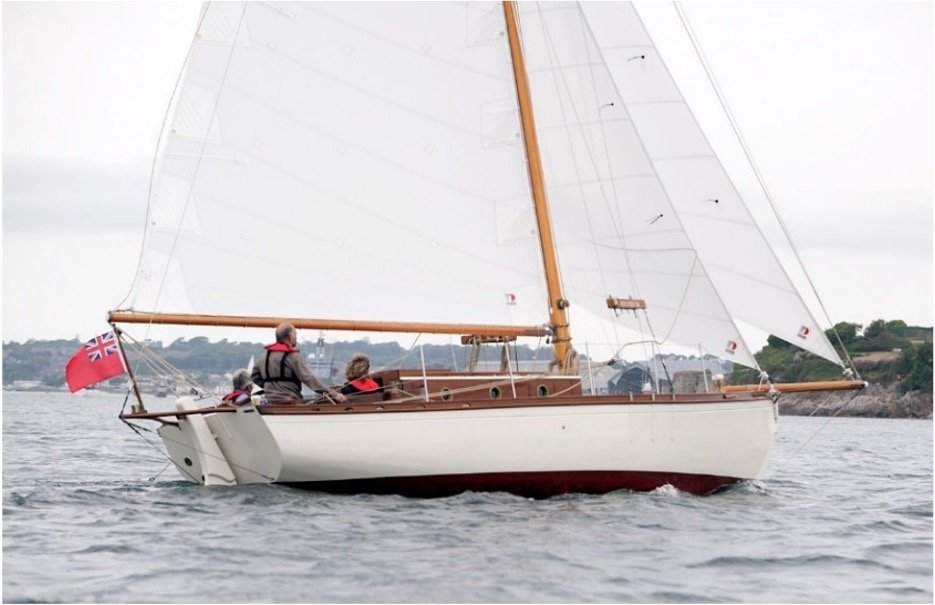
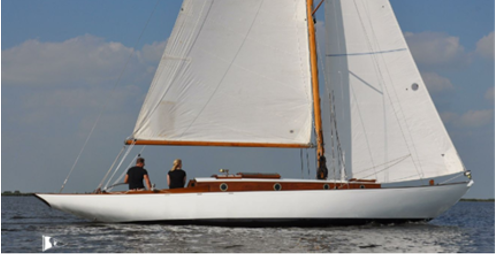

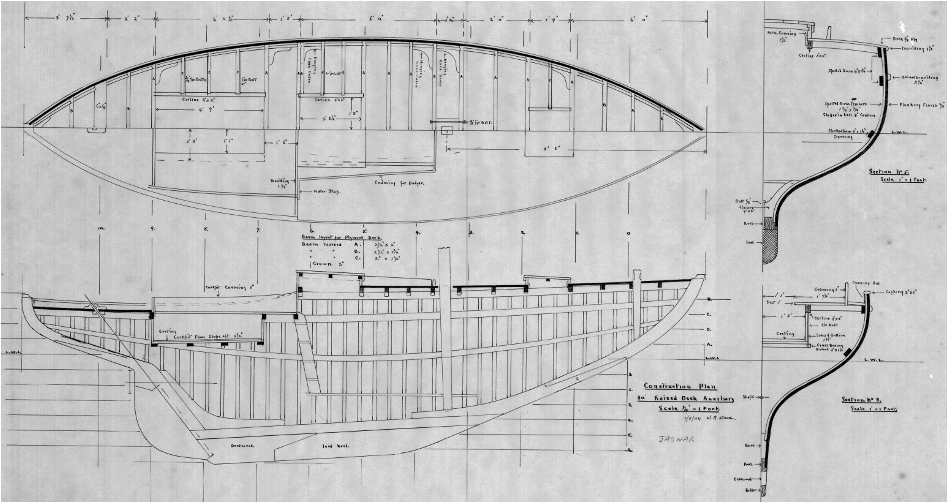


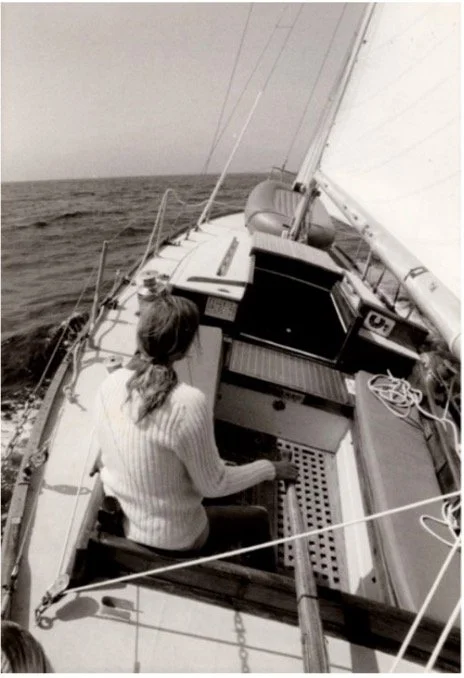

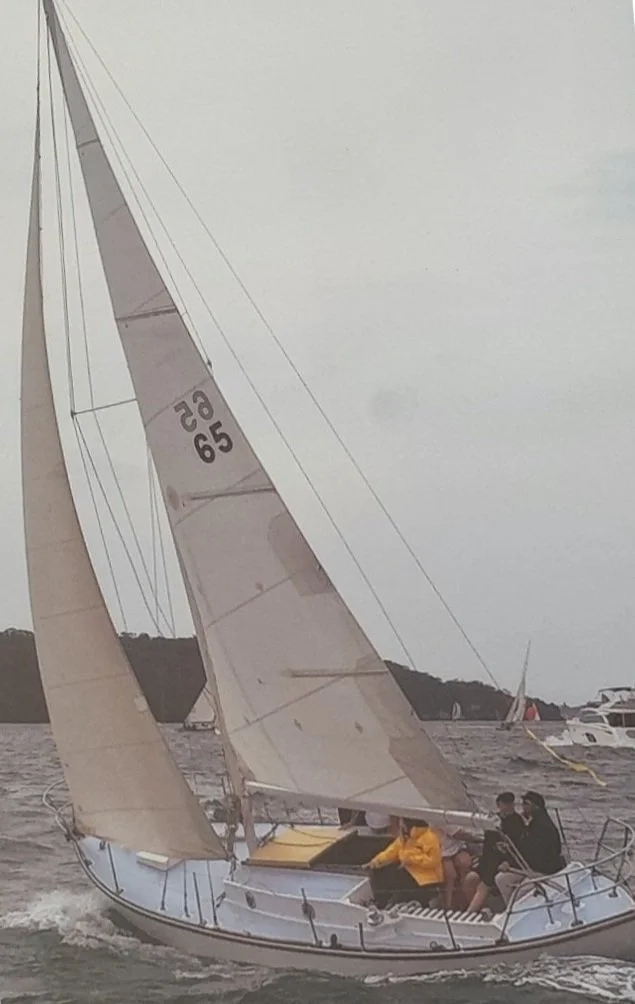

![Lines plan of RD3 CAMIRA & CARESS designed in 1948 by Wally Ward [1]](https://images.squarespace-cdn.com/content/v1/5f83c5947bb62b2036f18924/1653335304665-L8OT6J9Z8CUE9NKADPRV/Picture+31.png)
![Construction drawing of RD3 CAMIRA & CARESS designed in 1948 by Wally Ward [1]](https://images.squarespace-cdn.com/content/v1/5f83c5947bb62b2036f18924/1653335307350-KPU7TQ87BA0VDQSDMRY4/Picture+32.png)








